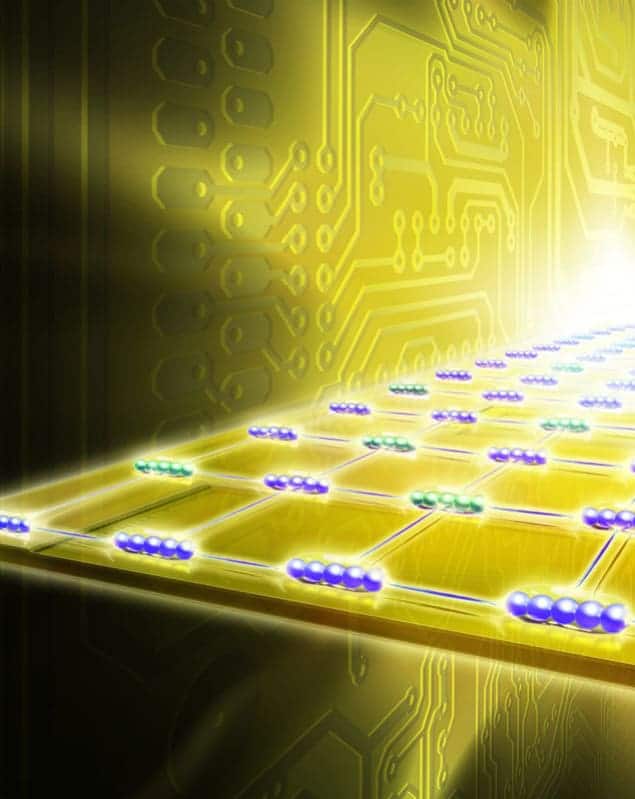
Two independent groups of physicists have built the first coupled harmonic oscillators using ions in two separate traps. Both teams were able to show that as little as one quantum of energy can be exchanged between the two oscillators. This ability to control the exchange of energy between ions at the quantum level could help in the creation of quantum computers that operate much faster than their classical counterparts.
The work has been carried out by researchers at the National Institute of Standards and Technology (NIST) in Colorado, US, and at the University of Innsbruck in Austria, who have coupled two quantum simple harmonic oscillators (SHOs) by trapping ions in adjacent parabolic potential wells. SHOs are ubiquitous in nature, playing a key role in everything from mechanical clocks to the transmission of light.
The NIST team – which includes Kenton Brown and David Wineland – carried out its experiment using two positively charged beryllium ions in separate wells about 40 µm apart. With both ions initially oscillating within their potential wells, the researchers fired laser beams at the ions, slowing their vibrational motion. The lasers were then directed at only one ion, further slowing it down until it was in its lowest vibrational quantum state. As both ions are positively charged, they naturally repel each other and it is this repulsive force that couples the motions of the two ions.
The team then “switched on” the interaction between the beryllium ions by adjusting the potential wells so that both ions had the same characteristic frequency of vibration. When this occurs, the ions can exchange quanta of energy with the slow ion speeding up and the fast ion slowing down. After a few hundred microseconds, most of the energy is transferred, and the energy flow reverses. This back-and-forth exchange of energy could continue indefinitely, but is eventually “washed out” as the ions absorb heat from their surroundings.
The team studied the energy flow by taking “snapshots” of the ions by firing a laser at them and measuring the amount of light they absorb, which depends on their motion. While this destroys the ions’ fragile quantum states, the team can map out the energy exchange by continually repeating the measurement, taking each snapshot at different times in the energy-exchange cycle.
Meanwhile, over at Innsbruck, Rainer Blatt and colleagues have performed a similar experiment, but this time using trapped calcium ions separated by about 54 µm. The Austrian group has, however, found that the coupling strength can be increased significantly if each potential well contains more than one ion. Indeed, the interaction strength increased by a factor of seven when both wells contain three ions. The reason, according to Blatt, is simply the greater amount of charge in each well.
Transforming information
As the exchange of energy is equivalent to the exchange of quantum information, such coupled oscillators could potentially be used to transfer information encoded in a photon to one trapped ion and then on to another ion. Indeed, Brown believes that the success of his group’s experiment suggests that information could also be transferred from an ion to a mechanical oscillator such as a tiny cantilever. This could be very useful because it would allow several different types of quantum system to be integrated within a quantum computer.
Trapped ions are an attractive technology for quantum computers because they allow quantum information to be held for a relatively long time. An important downside of ions, however, is that quantum processing is currently done using two ions interacting in the same well, which are then separated to interact with other ions. “Separating ions confined in one trap into two separate traps is costly because this process causes heating which must be counteracted with subsequent re-cooling,” Wineland told physicsworld.com.
The ability to couple separate wells could, however, do away with the need to transport ions, allowing arrays of coupled wells to be used to create quantum logic gates and other processing devices. Indeed, Blatt told physicsworld.com that his team is currently working on an array of coupled ion traps that could work in this way. Meanwhile in Colorado, the NIST team plans to boost the rate at which quantum information is exchanged between traps by shrinking the distance between the ions.
The results are both reported in Nature.




